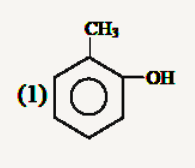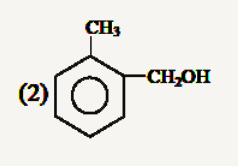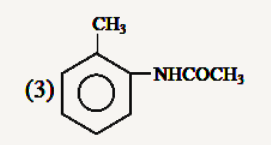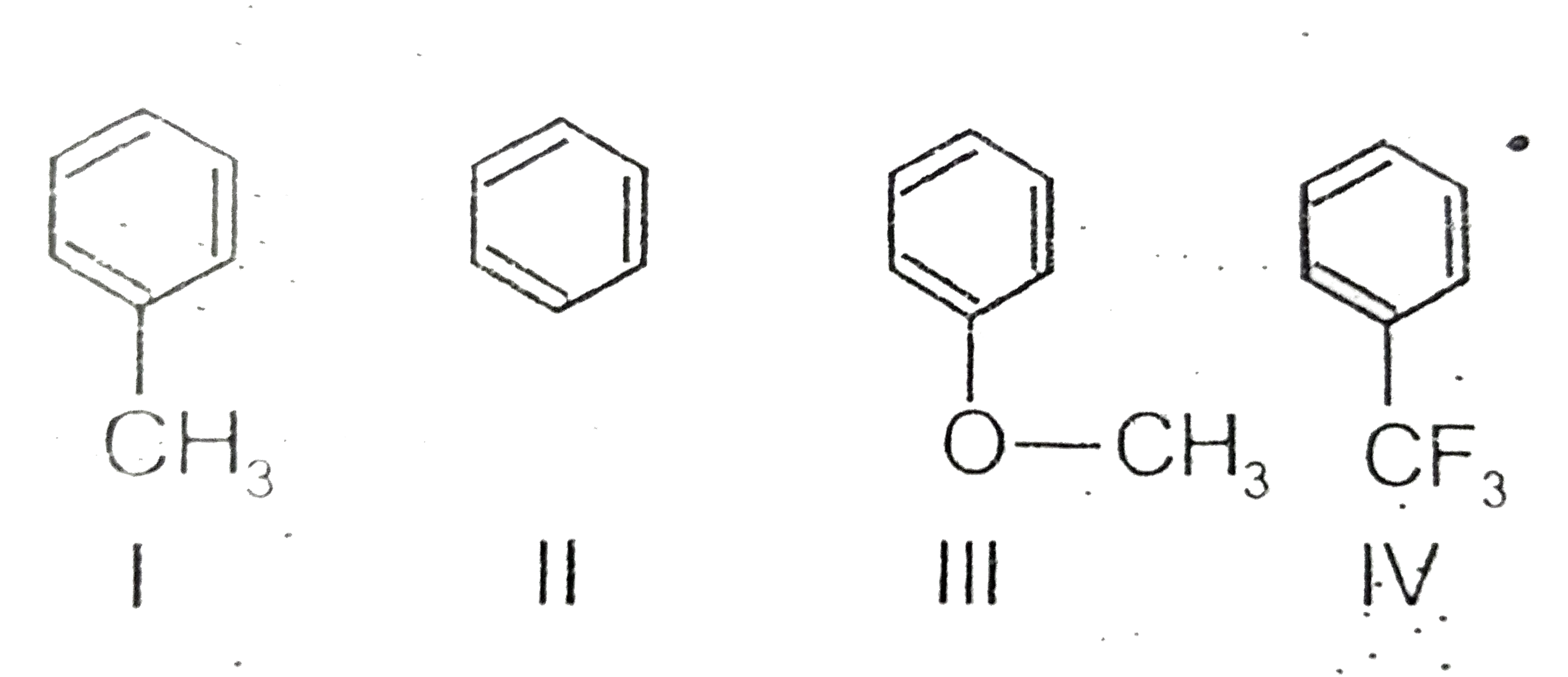Among the following compound find the one which is maximum reactive towards electrophilic reagent ?




The correct Answer is:A
To determine which compound is the most reactive towards electrophilic reagents, we need to analyze the electron-donating and electron-withdrawing effects of the substituents on the benzene ring in each compound. Here’s a step-by-step breakdown of the solution:
Step 1: Identify the Compounds
First, we need to identify the compounds provided in the question. Let's assume the compounds are:
1. Toluene (C6H5CH3)
2. Methoxybenzene (Anisole, C6H5OCH3)
3. Phenol (C6H5OH)
4. Aniline (C6H5NH2)
Step 2: Analyze the Substituents
Next, we analyze the substituents on the benzene ring for their effects:
- Toluene (C6H5CH3): The methyl group (–CH3) is an electron-donating group through the +I (inductive effect) but has no resonance effect.
- Methoxybenzene (C6H5OCH3): The methoxy group (–OCH3) has both +I and +M (mesomeric effect) due to the lone pairs on oxygen, which can donate electron density to the benzene ring.
- Phenol (C6H5OH): The hydroxyl group (–OH) also has +I and +M effects, significantly increasing the electron density on the benzene ring.
- Aniline (C6H5NH2): The amino group (–NH2) has +I and +M effects as well, but the presence of an electron-withdrawing group can reduce its effectiveness.
Step 3: Compare the Effects
Now we compare the overall electron-donating effects of each substituent:
- Toluene: Moderate reactivity due to +I effect.
- Methoxybenzene: Strong reactivity due to +M effect from the methoxy group.
- Phenol: Very strong reactivity due to +M effect from the hydroxyl group, which significantly increases electron density.
- Aniline: Strong reactivity, but the electron-withdrawing nature of the attached groups can reduce the effectiveness of the +M effect.
Step 4: Determine the Most Reactive Compound
Among these compounds, phenol has the strongest +M effect, which increases the electron density on the benzene ring the most. Therefore, it is the most reactive towards electrophilic reagents.
Conclusion
The compound that is maximum reactive towards electrophilic reagents is Phenol (C6H5OH).
First, we need to identify the compounds provided in the question. Let's assume the compounds are:
1. Toluene (C6H5CH3)
2. Methoxybenzene (Anisole, C6H5OCH3)
3. Phenol (C6H5OH)
4. Aniline (C6H5NH2)
Next, we analyze the substituents on the benzene ring for their effects:
- Toluene (C6H5CH3): The methyl group (–CH3) is an electron-donating group through the +I (inductive effect) but has no resonance effect.
- Methoxybenzene (C6H5OCH3): The methoxy group (–OCH3) has both +I and +M (mesomeric effect) due to the lone pairs on oxygen, which can donate electron density to the benzene ring.
- Phenol (C6H5OH): The hydroxyl group (–OH) also has +I and +M effects, significantly increasing the electron density on the benzene ring.
- Aniline (C6H5NH2): The amino group (–NH2) has +I and +M effects as well, but the presence of an electron-withdrawing group can reduce its effectiveness.
Now we compare the overall electron-donating effects of each substituent:
- Toluene: Moderate reactivity due to +I effect.
- Methoxybenzene: Strong reactivity due to +M effect from the methoxy group.
- Phenol: Very strong reactivity due to +M effect from the hydroxyl group, which significantly increases electron density.
- Aniline: Strong reactivity, but the electron-withdrawing nature of the attached groups can reduce the effectiveness of the +M effect.
Among these compounds, phenol has the strongest +M effect, which increases the electron density on the benzene ring the most. Therefore, it is the most reactive towards electrophilic reagents.
The compound that is maximum reactive towards electrophilic reagents is Phenol (C6H5OH).
Similar Questions
Among the following compounds the one that is most reactive towards electrophilic nitration is
View SolutionAmong the following compounds the one that is most reactive towards electrophilic nitration is
View SolutionWhich one the most reactive towards electrophilic reagent:
View SolutionWhich one of the following is most reactive towards electrophillic reagent?
View SolutionAmong the following compounds ,which one is found is RNA?
View SolutionAmong the following compounds, the decreasing order of reactivity towards electrophilic substitution is

View SolutionWhich one of the following is most reactive towards electrophilic attack?
View SolutionWhich of the folliwng compounds is the most reactive towards electrophilic substitution reaction?
View SolutionWhich of the following metioned positons in the given compound is more reactive towards electrophilic substituations?

View SolutionWhich of the following compounds is the most reactive towards nucleophilic addition reactions?
View Solution
